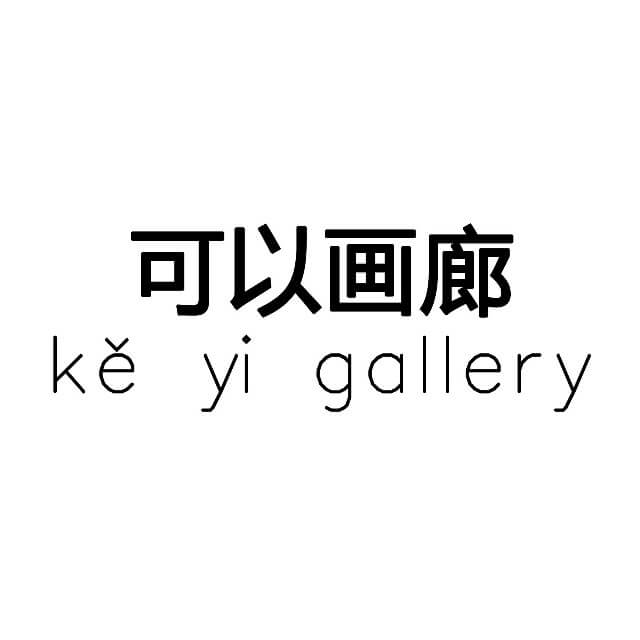可以画廊欣然宣布即将于6月21日在合肥空间举办群展「崭新的建筑,具象盘踞在每一个楼层」。这将是在合肥厂房空间举办的最后一个展览,展览将集中呈现郭兆霖、刘志成、刘声、李创李、黎家齐、梁腾、徐堂昊、叶兆丰、邹易韦、曾庆强、朱钇名等11位艺术家的30余件新作。展期将持续至8月19日。
“万物在言说。”作为人类改造世界的第一个表现,建筑,不仅仅是一种知识体系,更好似“容器”般,借由钢筋混凝土的结构美学引领着艺术革命。而绘画,正是艺术这座巨大容器中无可比拟的关键结构。纵观艺术史的发展过程,传统绘画形式的追溯从古希腊到文艺复兴、经新古典、浪漫主义、印象及后印象派,在其漫长的绘画语言探索下开启了现代艺术思潮,包括野兽派、立体派、达达、超现实、波普等等。直至二十世纪初,在塞尚结构绘画的影响下,德朗放弃了主观表现,转向对对象的直观描摹,具象绘画的表现方式在彼时艺术家们对现代艺术运动的反思和探究中逐步确立。二十一世纪,具象绘画空前繁荣,我们不难发现,艺术风格总是在多元的社会背景下相互交替、更新,在照相技术高度发达的今天,各种新兴的艺术形式与之而来,“绘画过时、绘画已亡”的口号不断冲击着传统艺术形式,同时也考验着当代艺术家们的创作面貌,以及如何把握住符合每个时代节点的思考与表达。
贡布里希在《艺术的故事》中言:艺术史一直是“试图表现超越现实真理的艺术”和“优先参考现实世界的艺术”之间的交替;它使我们能够将这一理论应用于个人绘画,并更好地理解每幅画位于二元性的哪一边(抽象表现或具象现实),或者是否处于过渡时刻的边缘。绘画,记录着人们观看世界的方式。具象绘画作为传统艺术的重要一环,同时面临着当代艺术潮流的碰撞与挑战。今天,艺术家在以具象绘画为主进行创作时,除了内容主题形式的探索,也彰显了更多的个人经验与精神追求,从传统到现代的困境,也不单单是观看的方式,更多地涉及到人和世界的关联以及如何有意识地参与到对世界感知的建构中。 本次展览“崭新的建筑,具象盘踞在每一个楼层”,通过探讨具象绘画的新面貌为主旨,以此呈现新、中生代的艺术家在个体经验的差异下对具象绘画的不同诠释,在将传统绘画技艺与艺术的当代性相结合的语境下,折射出他们看待世界的独特视角。郭兆霖通过观察世界的特殊视角去拆解、重组事物,以碎片化的图式打破常规的叙事方法,从而建立绘画新图像,形成独特的视觉效果。刘志成的作品以绘画的形式探讨当代人与物象在虚拟空间中的异化式日常以及科技附魅后的新神秘主义特质,进而重新思考事物的图像化定义以及在绘画中指涉的当下含义。刘声擅长观察和记录周遭的人事物,他的作品着眼于现实世界,通过质朴的绘画语言呈现自己在时代洪流中所见所闻,创造出一种微妙荒诞的又具有普适性与独特性的日常生活。李创李的绘画关注着现代生活中我们和机器以及环境的相互关联,在使用工具的同时也被工具塑造的过程中人的身心面对的种种问题。黎家齐沉溺于电子器物,探究异域审美输出带来的文化真空,通过绘画和现成品创作,杂糅相关视觉记忆,思考潜藏在背后的消费逻辑。梁腾的作品试图在画面中探讨绘画本体和人类性的结合,以此呈现出在这个时代下人类的潜意识状态。徐堂昊对于能激发情感表达愿望的图像情有独钟,通过对这些或不安,或卑贱,或神圣的图像进⾏再创作,以记录和反思⽣活中这些不易察觉的精彩。叶兆丰的画作通过具象的手法描绘了今天我们是如何通过智能技术来面对和表达与他人的互动交流,在数字技术带来的重大变革中探讨现实生活中的矛盾和冲突。邹易韦喜欢描绘漫画式的形象,以概念化的形象作为一个窗口,将现实世界的困惑、隐藏的暴力、潜在的欲望通过这个窗口,从而开启自恋的无厘头叙事。曾庆强的创作理念衍生于现代城市生活中各式黑色幽默与不满足的欲望,作品带有混乱和荒谬,呈现出他所处时代下受创的乐观情感,探讨科技资本主义的缺陷、物质文化、未完结的过去。朱钇名的创作以个人视角看待周遭的环境和探求自己的内心,将看到的提炼成绘画语言,释放出他对“草根”的同情。正如玛丽·卡萨特所言:“画家有两条路可走,一条是易于通行的通衡大道,另一条则是坎坷的羊肠小路”,而我们今天所看到的在具象绘画道途中的艺术家们,和她一样,走的是后一条。 艺术史在不断地修正、重建中轮回反复,今天,我们正处在一个关键时刻,具象绘画或许正引领着我们走出一条可以发生转变的解救之途。“我们还不能在此停下来,因为艺术还有更崇高的呼唤”,在这个属于我们这个时代的高楼里,具象绘画,正盘踞在艺术史这座摩天建筑的每一个楼层,并且逐渐清晰起来。。。
KeYi Gallery is pleased to announce that a group exhibition titled "Brand-new architecture, Figurativism loom on every floor" will be held at Hefei Space on June 21st. This will be the last exhibition to be held in the factory space of Hefei, and the exhibition will focus on more than 30 new works by 11 artists, including Guo Zhaolin, Liu Zhicheng, Liu Sheng, Li Chuangli, Li Jiaqi, Liang Teng, Xu Tanghao, Ye Zhaofeng, Zou Yiwei, Zeng Qingqiang and Zhu Yiming. The exhibition will run until August 19th.
By Lu Ziling
"Art is a ladder of constant discovery, but if it is overused, one may fall back to the ground."
- Andre Derain
"Everything speaks." As the first manifestation of human transformation of the world, architecture is more than just a knowledge system, better like a "container," with the structural aesthetics of reinforced concrete leading the art revolution. Painting is an unparalleled key structure in this huge container of art. Throughout the history of art, traditional forms of painting have been traced from ancient Greece to the Renaissance, through Neo-Classical, Romantic, Impressionist and Post-Impressionist. With its long exploration of the language of painting, it opens the trend of modern art. Including Brutalist, Cubist, Dada, Surreal, Pop, etc. Until the beginning of the 20th century, under the influence of Cézanne structural painting, Delang gave up subjective expression and turned to intuitive depiction of the object. The representation of figurative painting was gradually established in the reflection and exploration of the modern art movement. In the 21st century, representational painting achieved unprecedented prosperity, and it is not difficult to find that art style is always alternating and renewing in a diverse social context. Today, when photographic technology is highly developed, new forms of art are emerging, and the slogan of "painting is obsolete and painting is dead" has been constantly challenging traditional art forms, as well as testing the art spirits of contemporary artists and how to grasp the thinking and expression that corresponds to the nodes of each era.
Gombrich in "The Story of Art" says: the history of art has always been an alternation between "art which tries to express something beyond real truth" and "art that prioritizes reference to the real world"; it enables us to apply this theory to individual paintings and better understand which side of each painting is in duality (abstract or figurative reality), or whether it is on the verge of transition. Painting records the way people view the world. Representational painting, as an important part of traditional art, is also facing collisions and challenges from contemporary art trends. Today, artists who create figurative paintings are not only exploring the themes, forms, and content of their works, but also demonstrates more personal experience and spiritual pursuit. The dilemma between tradition and modernity is not just about the way of viewing, but also involves the relationship between humans and the world, and how to consciously participate in the construction of the world's perception.
The exhibition "Brand-new architecture, Figurativism loom on every floor," exploring the new face of figurative painting, which presents the new and mid-career artists' different interpretations of figurative painting in the context of combining traditional painting techniques with the contemporary art. Guo Zhaolin observes the world through a special perspective to deconstruct and reassemble things, breaking the conventional narrative method with fragmented patterns to establish a new image of painting and form a unique visual effect. Liu Zhicheng's works are mainly in the form of paintings exploring the alienated daily life of contemporary people and objects in the virtual space and the new mysticism after the possession of technology, rethinking the pictorial definition of things and the meaning of the present referred to in the paintings. Liu Sheng is skilled at observing and recording people and things around him, and his works focus on the real world, presenting what he sees and hears in the tide of history through a simple painting language, creating a subtle and absurd yet universal and unique everyday life. Li Chuangli's paintings focus on the mutual relationship between us, machines, and the environment in modern life, and the physical and mental problems faced by people in the process of using tools and being shaped by them. Li Jiaqi looks into electronic devices, studies the cultural bobble comes along with exotic aesthetic, blends related visual memories, and thinks about the consumption logic. Liang Teng's works attempt to explore the combination of painting ontology and human nature in the picture, so as to present the subconscious state of human beings in this era. Xu Tanghao has a penchant for images that inspire a desire for emotional expression, through images that can be unsettling, degrading, or sacred, to recreate, to record and reflect on the hidden wonders of life. Ye Zhaofeng's paintings depict how we interact and express ourselves through intelligent technology today, exploring the contradictions and conflicts in real life amidst the major changes brought about by digital technology. Zou Yiwei likes to draw comic-like images. This conceptualized image serves as a window through which the confusion of the real world, the hidden violence, and the potential desire open the absurd narrative of narcissism. Zeng Qingqiang's works are chaotic and absurd, reflecting the traumatized optimism of his time, exploring the flaws of technological capitalism, material culture, and the unfinished past. Zhu Yiming's works look at the surrounding environment and explore his own heart from a personal perspective, and refine what he sees into painting language, releasing his sympathy for "grassroots". As Mary Cassatt once said, "There are two roads an artist can take; one is the well-worn highway of conventionality; the other is the winding, hilly road where the artist makes his own way," and the artists we see today on the path of representational painting, like her, have chosen the latter.
Art history is constantly being revised and reconstructed, and today,we are at a critical moment when figurative painting may be leading us out of a path of salvation that can be transformed. "We cannot stop here yet, Because art has a more noble call," in this tall building of our era, figurative painting, it's lying on every floor of this skyscraper in the history of art, and it's getting clearer...




